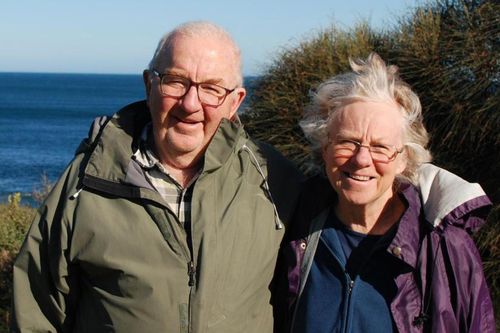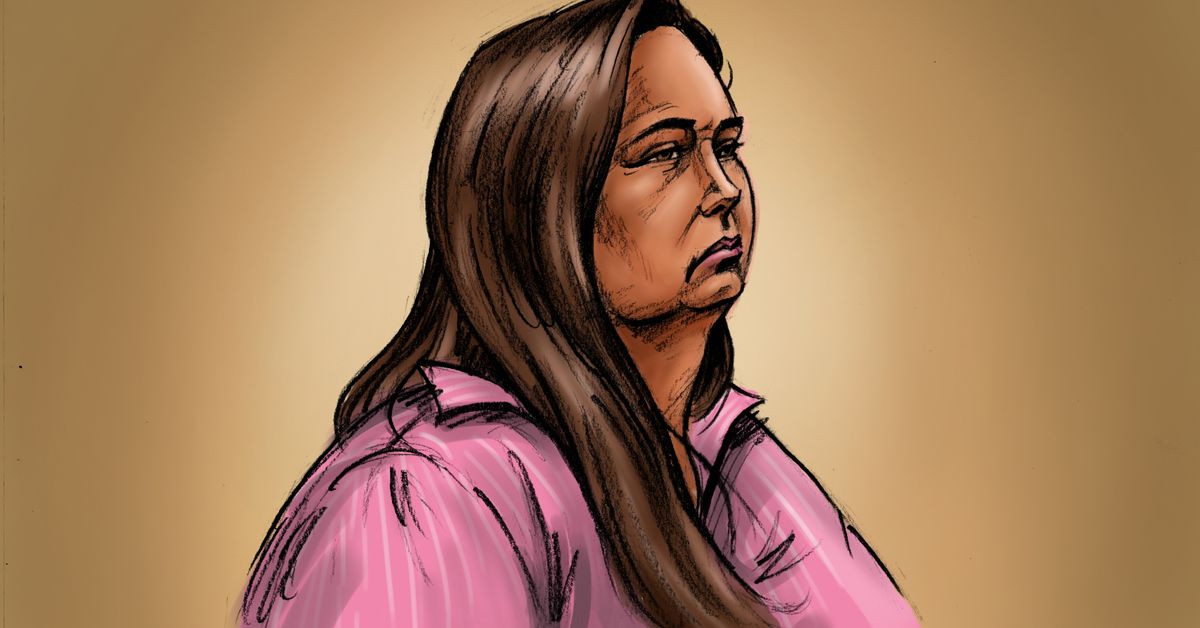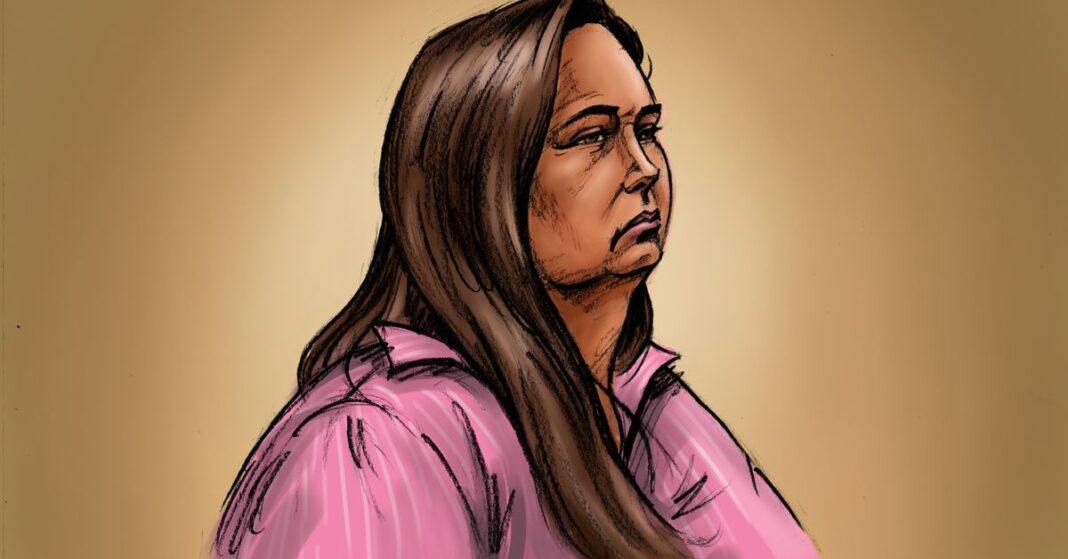In a shocking turn of events, a court has been presented with a chilling account of a tragic incident that has left many questioning the circumstances surrounding a mysterious death. A jury has been told that the alleged victim of mushroom poisoning inquired about the contents of a different plate before succumbing to their illness, casting a dark shadow of suspicion over those who were present at the time.

Mysterious Death by Mushroom Poisoning: An Investigation

In a shocking case of alleged murder and attempted murder, a 50-year-old mother, Erin Patterson, has been charged with three counts of murder over the deaths of three individuals who consumed a death-cap mushroom dish at her home in Leongatha, Victoria.
The alleged victim, Heather Wilkinson, who died after the lunch in July 2023, had questioned the different plate used by Erin Patterson, a detail that has become a crucial aspect of the investigation.

The Poisonous Lunch
The lunch in question was a carefully prepared meal consisting of individual beef wellingtons, each containing a piece of steak covered with mushrooms and wrapped in pastry, served with mash potato and green beans.
According to the prosecution, the meals served to the four guests, including Heather Wilkinson, Don and Gail Patterson, and Ian Wilkinson, contained death cap mushrooms, a highly toxic species of fungi.
- Heather Wilkinson ate an entire portion of the meal
- Gail Patterson had half a serve
- Don Patterson ate her entire serve
- Ian Wilkinson also ate an entire portion
The group’s conversation turned to Patterson’s medical issue, with the guests advising her to inform her children about her cancer diagnosis.

The Investigation and Charges
Prosecutor Nanette Rogers SC presented the case against Erin Patterson, highlighting the evidence gathered by investigators, including text messages and alibis.
Prosecution’s Case Against Erin Patterson
Patterson has pleaded not guilty to three counts of murder and one count of attempted murder.
The prosecution alleges that Patterson intentionally added death cap mushrooms to the meals served to her guests, with the motive being a family gathering to discuss her medical issue.
- Patterson invited her estranged husband Simon and his family to lunch to discuss her cancer diagnosis
- She had already started preparing the lunch when her guests arrived
- Patterson served the meals on four large, grey plates that were different from her smaller plate
Simon Patterson declined the invitation, citing discomfort, but agreed to discuss his wife’s health at a later time.

The Defence and Implications
Erin Patterson’s barrister, Colin Mandy SC, is expected to present the defence case, which may challenge the prosecution’s allegations and evidence.
The trial continues, with the prosecution presenting further evidence and the defence responding to the allegations.

The Motive: A Family Gathering
Patterson’s alleged motive for inviting her estranged husband and his family to lunch was to discuss her cancer diagnosis and seek their advice on how to inform their children.
This motive has been disputed by the prosecution, who argue that Patterson’s actions were premeditated and intentional.

The Evidence: Text Messages and Alibis
The prosecution has presented text messages and alibis as evidence to support their case against Erin Patterson.
One text message, sent by Simon Patterson to his wife, declined the invitation to lunch, citing discomfort, but agreed to discuss his wife’s health at a later time.
The prosecution has also presented alibis, including witness statements and medical records, to support their case.
The Defence’s Strategy
The defence’s approach in the trial of Erin Patterson, accused of murdering three people with a death cap mushroom dish, will likely focus on casting doubt on the prosecution’s claims. Patterson’s barrister, Colin Mandy SC, will attempt to create reasonable doubt in the minds of the jury, potentially arguing that the mushrooms were not intentionally poisoned and that Patterson’s actions were not reckless.
The defence may also try to discredit the prosecution’s evidence, including the testimony of the toxicologist and any other expert witnesses. By challenging the credibility of the prosecution’s witnesses and questioning the reliability of their evidence, the defence hopes to create uncertainty about Patterson’s guilt.
The Complexity of Mushroom Poisoning
Death cap mushrooms are notoriously difficult to identify, even for experienced mushroom enthusiasts. The mushrooms can resemble edible species, making it challenging to distinguish between safe and deadly varieties. The toxic compounds present in death cap mushrooms, including alpha-amanitin, can also be slow-acting, making it difficult to diagnose poisoning in the early stages.
Factors such as the amount of mushrooms consumed, individual tolerance, and the method of preparation can all contribute to the toxicity of the mushrooms. The complexity of mushroom poisoning makes it essential to handle mushrooms with caution and to seek expert advice when in doubt.
The Broader Implications
A conviction in this case could have far-reaching consequences, not only for Patterson and her family but also for the community at large. The trial has already garnered significant attention, and a guilty verdict could lead to increased scrutiny of food safety practices in the region.
The impact on Patterson’s family, including her estranged husband and children, could be devastating. A conviction could also have repercussions for the local community, potentially leading to increased anxiety and mistrust around food sharing and social gatherings.
The Science Behind Mushroom Poisoning
The Death Cap Mushroom: A Deadly Threat
The death cap mushroom, Amanita phalloides, is one of the deadliest mushrooms in the world. Native to Europe, the mushroom has been accidentally introduced to other regions, including Australia, through human activity. The mushroom’s toxic compounds can cause liver and kidney failure, leading to death if left untreated.
The death cap mushroom is particularly dangerous because it can resemble edible species, making it difficult to identify. The mushroom’s toxicity is also highly variable, depending on factors such as the amount consumed and individual tolerance.
The Role of the Toxicologist
In the investigation into the deaths, a toxicologist played a critical role in analyzing the mushrooms and advising Patterson. The toxicologist’s expertise was essential in identifying the presence of death cap mushrooms and determining the likely cause of the poisoning.
The toxicologist’s testimony will likely be a key part of the prosecution’s case, providing critical evidence about the toxicity of the mushrooms and Patterson’s potential knowledge of their danger.
The Importance of Food Safety
The incident highlights the importance of proper food safety practices, including proper handling and cooking of mushrooms. Death cap mushrooms can be particularly dangerous because they can resemble edible species, making it essential to exercise extreme caution when handling wild mushrooms.
Food safety practices, such as proper storage and handling of mushrooms, can help prevent accidental poisoning. It is also essential to seek expert advice when in doubt about the safety of a particular mushroom species.
The Community’s Response
Community Reaction to the Trial
The community has been shocked and saddened by the trial, with many residents expressing disbelief and outrage at the alleged actions of Patterson. The trial has also raised concerns about food safety and the importance of proper handling and cooking of mushrooms.
The media attention surrounding the trial has also had a significant impact on the community, with many residents feeling anxious and uneasy about the potential consequences of the trial.
The Need for Awareness
The incident highlights the need for increased awareness about death cap mushrooms and the importance of proper identification and handling. Many people are unaware of the dangers of death cap mushrooms, which can lead to accidental poisoning and even death.
Raising awareness about the dangers of death cap mushrooms and promoting proper food safety practices can help prevent similar incidents in the future.
Support for the Victims’ Families
The community has rallied around the families of the victims, offering support and condolences in the wake of the tragedy. Local organizations and community groups have also provided assistance, including counseling and other forms of support.
The trial has brought the community together, with many residents expressing solidarity with the victims’ families and calling for justice.
Conclusion
In conclusion, the trial of the alleged mushroom poisoning case has taken a surprising turn, as evidence revealed that the victim had queried a different plate before their tragic demise. This shocking revelation has raised more questions than answers, leaving the jury to ponder the circumstances surrounding the incident. The article has highlighted the key testimony of witnesses, the investigation’s findings, and the defense’s arguments, painting a complex picture of the events leading up to the victim’s death.
The significance of this case extends beyond the courtroom, as it sheds light on the often-overlooked risks associated with food safety. The allegations of mushroom poisoning serve as a stark reminder of the importance of stringent quality control measures in the food industry, lest we risk compromising public health. As the verdict is yet to be delivered, the implications of this case will undoubtedly resonate with the community, sparking a necessary conversation about accountability and responsibility.
As we await the outcome of the trial, one thing is certain – the memory of the victim will not be in vain. This tragedy serves as a poignant reminder of the importance of vigilance and proactive measures to prevent such incidents in the future. In the words of the victim’s loved ones, “May their passing not be in vain, but a catalyst for change, so that no one else has to suffer the same fate.” As we reflect on this heartbreaking incident, we are compelled to ask: What measures will we take to safeguard our food supply, and what lessons will we learn from this preventable tragedy?
